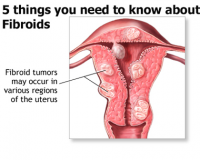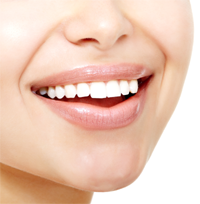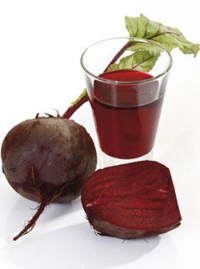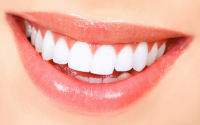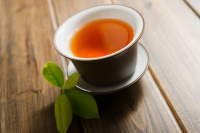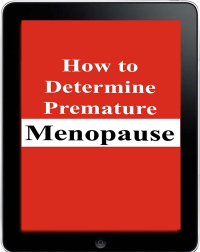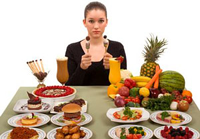Early morning Heel pain ? Don’t neglect Plantar fasciitis A very common problem for women above thirty is the pain in the heel which starts first thing in the morning when you put your feet down. This symptom is termed as Plantar fasciitis and there are many reasons attributed to this pain.One of them being flat footedness, overweight, standing for too long , running for too long and the planta facis ligament in the foot which gets inflamed causing this pain. Once you start noticing this pain don’t neglect it and visit your nearest orthopedic and start treatment as suggested by the doctor. · Rest your feet. Limit or, if possible, stop daily activities that are causing your heel pain. Try to avoid running or walking on hard surfaces, such as concrete. · To reduce inflammation and relieve pain, put ice packs regularly on your heel. · Wear shoes with good shock absorption and the right arch support for your foot. Athletic shoes or shoes with a well-cushioned sole are usually good choices. · Try heel cups or shoe inserts to help cushion your heel. You can buy these at many athletic shoe stores. Use them in both shoes, even if only one foot hurts. · Put on your shoes as soon as you get out of bed. Going barefoot or wearing slippers may make your pain worse. · Do simple exercises such as toe stretches , calf stretches , and towel stretches several times a day, especially when you first get up in the morning. These can help your ligament become more flexible and strengthen the muscles that support your arch. (For towel stretches, you pull on both ends of a rolled towel that you place under the ball of your foot.) · Roll a frozen water bottle under the arch. Stretch first then roll out the arch for 10 minutes; you don’t want to stretch the tendon when it’s ice cold. The plantar tendon needs to be supported and strengthened using good arch soles which will push the arches and if you are overweight its best to get into a weight loss program and shed the extra weight which puts pressure on the heels.
What your nails tell about you Our finger nails represent or are a part of our health indicators. When in pink of health our nails also have light pinkish to white tinge on them which reflect good health. They also have the ability to tell if you've got emphysema or other lung disorders, arthritis, iron deficiencies or kidney and liver problems. It turns out the shape of your nails, along with your nail consistency and the lines and indentations in your nails say a lot about your overall physical health, according to Dr. Amy Derick, a clinical instructor of dermatology at Northwestern University. For example, people that suffer from lung problem often suffer from "clubbed" nails, wherein the fingertips become rounder and the shape of the nail becomes more curved. If you're noticing horizontal lines in your nails -- what are known as Beau's lines -- you may be more stressed than usual. They're a common sign of physical stress and have been seen among people who've gone through chemotherapy, or experienced undernourishment. Kidney and liver problems can make half of your nails go white, and if you're noticing that your nail is lifting out of your nail bed, it could be a sign of kidney or thyroid problems. Just our two cents to keep you posted on healthy nails and BTW, don’t forget to get that once a month manicure to keep your nails nice and shiny.
బి.పి. తగ్గాలా? ఇదిగో చిట్కా! రక్తపోటు కంట్రోల్లో లేకపోతే ఎన్నోరకాల అనారోగ్య సమస్యలు చుట్టుముడతాయి. శారీరక వ్యాయామంతోపాటు, టైమ్కి మందులు వేసుకోవడం, ప్రశాంతంగా వుండటం, రక్తపోటుని అందుపులో వుంచే మార్గాలు. అయితే మానసిక ప్రశాంతతకి మెడిటేషన్, యోగా వంటివే కాక సముద్రపు అలల సవ్వడి వినడం కూడా సహాయపడుతుందని ఈమధ్య ఒక అధ్యయనంలో తేలింది. సముద్రపు అలలు ఒకదానితో ఒకటి పోటీపడుతూ చేసే అటజడి, అవి చేసే సవ్వడి వినడానికి ఎంతో హాయిగా వుంటుంది. ఆ శబ్దం వింటుంటే మనసు ప్రశాంతంగా మారిపోతుంది. ఇది సముద్రం దగ్గర అలవాటుగా సమయాన్ని గడిపే అందరికీ అనుభవమే. అయితే ఇలా సముద్ర అలల సవ్వడి వినేవారిలో రక్తపోటు తగ్గడం శాస్త్రవేత్తలు గమనించారు. వారానికి ఓ మూడుసార్లయినా ఓ పావుగంట సముద్రపు ఒడ్డున కూర్చుని ఆ అలల సవ్వడి వింటేచాలు.. నెమ్మదిగా రక్తపోటు అదుపులోకి వచ్చేస్తుందట. మరి దగ్గరలో సముద్రం లేకపోతే ఎలా? నిపుణులు దీనికీ పరిష్కారం చెబుతున్నారు. ఆ అలల సవ్వడిని రికార్డు చేసి విన్నా చాలుట. రోజూ ఓ పావుగంట ఈ సముద్రపు అలల సవ్వడిని వింటూ వుంటే చాలు రక్తపోటు తగ్గడం ఖాయం అంటున్నారు ‘అమెరికన్ హార్ట్ అసోసియేషన్’ వారు. అలల శబ్దాలు మెదడులోని ఆల్ఫా తరంగాల్ని నియంత్రిస్తాయని, దానివల్ల నిశ్శబ్ద వాతావరణం ఏర్పడి, ఏకాగ్రత కుదురుతుందని చెబుతున్నారు ఆ పరిశోధకులు. చిన్న చిట్కా పెద్ద అనారోగ్యాల నుంచి కాపాడుతుందంటే పాటించకుండా వుంటామా చెప్పండి.. అర్జెంటుగా ఇంటర్నెట్లోంచి ఆ అలల సవ్వడులను డౌన్లోడ్ చేసేయండి మరి.. - రమ
Start exercising to avoid heart diseases Once you reach your 30s the warning bells start ringing. If it isn’t that nagging pain in your knee or irritating PMS or the hot flushes in your body to the palpitation in your heart ,for women who over 30 physical inactivity may be the greatest single contributor to heart disease risk. Researchers followed 32,154 Australian women in three age groups: those born in 1973-1978, 1946-1951 and 1921-1926. They used a mathematical formula called population attributable risk, or P.A.R., that indicates the percentage reduction in disease that would be achieved in a given population if exposure to a specific risk were eliminated. The study was published online last week in The British Journal of Sports Medicine. They found that the importance of the most common risk factors for heart disease — smoking, high blood pressure, physical inactivity and excess weight — varies with age. In women under age 30, for example, the greatest contributor to heart disease is smoking. Stopping smoking would reduce the risk of heart disease in this group twice as effectively as reducing high body mass index. But for women in their 70s, being physically active would lower the P.A.R. almost three times as much as smoking cessation, and significantly more than reducing blood pressure or achieving a healthy body weight. “It’s a heads-up for women in their 30s, 40s, 50s to get moving,” said the lead author, Wendy J. Brown, a professor of health at the University of Queensland. “And if they are moving, to move more.” So get into action and start working towards a healthy goal for better health!
5 Things you need to know about Fibroids Dr. Elizabeth A. Stewart, a professor of obstetrics and gynecology at the Mayo Clinic, is an internationally renowned expert on fibroids and is on the board of the nonprofit Fibroid Foundation, an education and advocacy group and has done extensive research on uterine fibroids.“Women have been reluctant to talk too much about fibroids, ” Dr. Steward said. “It is a sensitive topic. No one likes to get into graphic details of how her life is made miserable by menstrual bleeding.” The disease traditionally has gotten short shrift because of this social reticence, she says, and because it affects women of all races. Dr. Stewart says every women with the problem should know these five things. 1. Fibroids won’t kill you. They are not malignant, and it is exceedingly rare for fibroid cells to show any signs of becoming a precursor to cancer. Even though some fibroids can grow to be huge — the size of a grapefruit or football — they remain benign tumors. 2. Not all fibroids need to be treated. Fibroids are very common, and many women are able to conceive, bear healthy children and live out their lives free of symptoms. 3. Fibroids generally shrink on their own during menopause, and symptoms tend to subside then too. If you can make it to menopause without surgery or other treatment for your fibroids, the odds are you’ll never need surgery. 4. Fibroids tend to be more prevalent, and more severe, among older women. They develop earlier, grow bigger and cause worse symptoms as you grow older. Not all Fibroids require treatment. 5. Fibroids are a common cause of heavy menstrual bleeding. If you have long menstrual periods with heavy bleeding, see your doctor to rule out fibroids. Source:“Uterine Fibroids: The Complete Guide” (Johns Hopkins University Press, 2007)
How much of Iron should you take in Pregnancy? The practice of getting your hemoglobin levels checked is a regular feature when you are pregnant. Your Gynecologist tests your blood for anemia at your first prenatal appointment. One of these tests (hematocrit) measures the percentage of red blood cells in your plasma. The other (hemoglobin) measures the number of grams of hemoglobin in your blood. If your test indicates that you have iron-deficiency anemia, your Gynecologist will prescribe an iron supplement. The dose will depend on the severity of your anemia, but it's likely to be 60 to 120 mg or more of elemental iron daily, in addition to the iron in your prenatal supplement. Follow your practitioner's instructions – never take more iron than prescribed. Note that these doses refer to the amount of elemental iron, or pure iron, in a supplement. Some labels list the amount of ferrous sulfate (a kind of iron salt) instead of or in addition to the amount of elemental iron. A supplement that contains 325 mg of ferrous sulfate, the most commonly used iron supplement, will give you about 60 mg of elemental iron. Others use ferrous gluconate, 300 mg of which yields about 34 mg of elemental iron, or ferrous fumarate, which contains about 106 mg of elemental iron in a 325 mg tablet. In order to absorb as much of the iron as possible, it's best to take your iron pills on an empty stomach. After that have water or orange juice (the vitamin C helps with absorption), but not with milk (calcium interferes with absorption). Coffee and tea should be avoided completely as this also stalls the absorption.. Within a week or so after starting treatment, you should be producing a lot of new red blood cells and your hemoglobin level will begin to rise. It usually takes just a couple of months for the anemia to resolve, but your Gynecologist will likely advise you to continue taking iron supplements for several more months so you can replenish your iron stores and you could get a break after you have your baby.
Yoga For Computer Users Yoga For Computer Users: Watch Dr C.V.Rao of Kapila Maharshi Yoga Kendram show us various exercises for people who are on the Computer for long hours. A must watch for all those ladies who are in the field of IT and who use the computer regularly. He shows simple Yoga exercises which can be done at your workplace without any discomfort or need for space. He shows various breathing exercises along with Yogaasanas for keeping the body fit , alert and free from any symptoms related to excessive use of the Mouse and watching the Computer for long.
Flash those 32 Pearly Whites We have seen actress Madhuri Dixit flash her toothy smile in a popular tooth paste advertisement where she talks about getting white teeth.As we age so do our teeth. This is quite visible when the discoloration sets in and they tend to turn yellow. This also makes us look older than we actually are and for this there are a number of products available to whiten your teeth. These tooth whiteners contain bleaching agents like peroxide which help whiten the teeth. Before you bleach for the first time A first-timer should always consult her dentist before trying any tooth whitener, even an over-the-counter product, because not all teeth react to whitening the same way. If you have any of these types of dental implants like caps, crowns, and veneers, don't take to lightening because peroxide can't penetrate them. Stains caused by antibiotics, like tetracycline, are also tricky, because they can occur in the layers inside the tooth, which brighteners can't reach. Your dentist will be able to advise you about the best method for you. How whiteners work All bleaching methods use peroxide--whether in gel, strip, or liquid form--to dissolve surface stains to whiten teeth, explains Debra Glassman, D.D.S., a cosmetic dentist in New York City. Teeth surfaces are made up of thousands of tiny dentinal tubules--hollow structures stacked horizontally, like thin straws. They're extremely porous and absorb pigments from food and drink. (Anything that can stain a white T-shirt can discolor your teeth, Glassman says.) Peroxide bubbles into the tubules and lightens those pigments. So if have decided to go for whitening your teeth , go with the above added awareness and what's more is that a Columbia University Study found that women with healthier-looking teeth earn more than those with less sparkling grins. Something to motivate you to get those flashy pearls of white!
Handling Sunstroke The zooming temperatures and heat wave is a common feature for any summer irrespective of country, state or place. There are times when you cannot avoid travelling in the sun which could result in heat strokes or Sunstroke's as they are commonly known .This can be a life threatening condition if not treated properly or on time. Check out these tips to follow when you have a sun stroke. First and foremost get into a shade when you start feeling dizzy . Remove your socks and other heavy clothing as the heat remains trapped inside . Don’t drink water immediately .Give yourself some time and start taking water or other fluids gradually. Avoid caffeinated beverages. Place ice packs at the neck, armpits, and groin. You can also rub the limbs with ice cubes. Massage the arms and legs gently. This will allow some cool blood to return to the brain as well as the core of the body. Take a cool shower or apply a wet towel all over your body. If it is not possible to have a bath, at least apply water to your forehead, neck, face and arms After applying a cold pack lie down with your head in an elevated position. Replenish the body of its salts by drinking electrolyte powder or glucose or by drinking a sports drink especially formulated with electrolytes or eating something salty. The regular ORT Oral Re-hydration Treatment where you mix salt and sugar in a glass of water is also an easy substitute. If the situation is serious where you end up having vomiting and diarrhea please visits the nearest physician or hospital. To prevent sunstroke, please avoid unnecessary travel in the Sun, wear a cap, hat /scarf and shades. Wear cool comfortable cottons and avoid heavy clothing and most importantly stay O2 hydrated with a bottle in your bag !
Checking your Sugar levels- frequency The American Diabetes Association recommends testing your blood sugar at least three times a day if you need multiple daily insulin injections. But for the rest of those with type 2 diabetes, testing frequency should be "dictated by the particular needs and goals of the patients," the ADA says. That means that frequent testing is clearly necessarily for some people with type 2 diabetes and all type 1 diabetics who take multiple daily insulin injections also need to monitor blood sugar frequently. Some studies suggest that frequent monitoring is not always helpful for people with type 2 diabetes. But that research is still being debated. Your doctor or diabetes educator can help you determine how often and when you should be testing. The other factors that needs to be taken into consideration when you need to check your sugar levels are : Medication: Some classes of oral drugs can cause hypoglycemia or low blood sugar, so you may need to test more often. Changes: If you've just been diagnosed with diabetes, started on a new medication, added a new type of food, or recently changed some other factor (for example, you have gained or lost weight, or are exercising more or less often), then you should test more frequently.
Beetroot Benefits Including a few beetroot in your everyday diet can actually help boost your weight loss and improve your health. Beta cyanin is a powerful antioxidant present in the root can help remove toxins from your liver, bloodstream and also help to remove fatty deposits from your bloodstream, which can lower your cholesterol and therefore your risk of heart disease. ->Research suggests that daily consumption of either 250ml beetroot juice or 1-2 cooked beetroots, around 100g, could dramatically lower blood pressure levels, making it a bit of a wonder food for high blood pressure patients.It also bostteh hemoglobin content in your body. ->Beetroot is also rich in folic acid, which is essential for healthy tissue growth and cell repair. Folic acid is absolutely crucial to the development of a baby’s spinal cord, which makes beetroot an excellent food to eat during pregnancy. It also contains iron, which is a great nutrient to combat fatigue. ->Beetroot can help to reduce cholesterol levels, too – it contains soluble fibre, and research has suggested that soluble fibre can reduce cholesterol levels. It also contains flavonoids and carotenoids, which are known to reduce the levels of bad cholesterol whilst improving the levels of good cholesterol. ->It has a very low glycaemic load, which means that when you consume it, it is very slowly converted into energy, which means that it won’t overload your bloodstream with sugars. This prevents blood sugar highs and therefore blood sugar lows, which can lead to cravings of sugary and fatty foods. ->Beetroot is also rich in insoluble fibre, which ensures a healthy digestive tract and a healthy bowel, which reduces your risk of bowel cancer. Eating insoluble fibre can help to boost your metabolism and it can also help you to lose weight as the food that you consume helps to fill you up, but as you cannot digest it, you don’t take in as many calories from it. And finally Beetroot is also an excellent food for weight loss as it is very low in calories, containing around 38 calories per 100g of beetroot, along with just 0.1g of fat.
Preventing Urinary tract Infection Urinary tract infections (UTIs), which also called bladder infections, are a common problem for girls/women who tend to get it more often than their male counterparts. The Symptoms could vary from a sharp burning pain during urination, frequent urination to pain in the back or lower abdomen resulting in nausea/vomiting and fever. Casues: A woman’s urethral opening (which is sterile) is right near two big sources of bacteria: the rectum and the vagina. Bacteria from these areas can move toward the urethra from the rectum if a woman wipes the wrong way after going to the bathroom, and could cause a UTI. During sexual intercourse, bacteria in the urethra can be pushed toward the bladder. And using some types of birth control—like a diaphragm—can also cause bacteria to collect more, and eventually get into the urethra and the bladder. Urinating in unhygienic public bathrooms could also cause UTI. Prevention: Most UT infections are curable with a few days of antibiotic treatment. When a bladder infection starts, you can help prevent it by trying the following: · Drinking at least six to eight glasses of water a day · Coconut water and soothing fruit juices are a great alternative for water · Don’t wait to go to the bathroom—urinate when you get the urge · Wipe from front to back whenever you go to the bathroom · Urinate before and right after sexual intercourse · Take showers instead of baths · Avoid drinking a lot of caffeine or colas
Breathing away the pain during PMS PMS or Pre Menstrual Syndrom which can be a pain in the literal sense , causes a great deal of discomfort and anxiety. This is a time when you are prone to taking short and shallow breaths which is actually increases the pain. Focusing on a specific breathing pattern can help the body relax and release some tension around the pain & for that there is a simple and wonderful breathing technique in yoga called the Viloma Pranayama. Start by inhaling and exhaling naturally through your nose. After your next exhale, pause for two seconds before inhaling. Repeat up to five times. This can be performed while seated or while lying down --- just as long as your head is positioned slightly higher than your chest. This technique also improves blood circulation, which eases the pain. This can be done by any lady and can also be taught to the young girls who face this PMS pain at a young age.
Coconut oil for pearly Teeth Yes you heard us right ! The nutty coconut oil can actually be used to make your teeth white. All you have to do is to mix baking soda in Coconut oil and brush your teeth with this mixture. It not only polishes your teeth and with that smooth, post-dentist feeling which you do for yourself will help keep your 32 pearly whites in good health. It may leave an oily taste in your mouth, so you could try doing this as a once in two weeks polishing sessions with coconut oil. So it’s not just your hair or skin Coconut oil can benefit your teeth too. As an add on you could try the the oil pulling session with coconut oil which is also extremely beneficial for the entire facial muscles and the overall body too.
Weight Loss with Oolong Tea We have heard the benefits of green drinking and the easy slim teas and other concoctions that have made their way in to the weight loss market .Another entrant from the Chinese gardens is the Oolong Tea which is known to be more beneficial than the regular Green tea. The Chinese have long believed that oolong tea is beneficial in reducing and maintaining weight. A Chinese study, in 1998, of 102 females showed that continuous consumption of oolong tea for six weeks resulted in a reduction of body weight. This study, along with the question of other compounds contributing to tea's weight loss benefits, spurred further research. While green tea gets most of the limelight when it comes to healthy teas, oolong actually contains larger quantities of the polyphenols that aid in weight loss. A study, conducted by the U.S. Agriculture Research Services Diet and Human Laboratory, showed individuals who drank oolong tea burned 67 more calories per day than groups who drank caffeinated water, half strength oolong tea or non-caffeinated water. The oolong tea in now available all over the world except that it is a bit expensive, but that should not deter you from trying and benefiting from it.
Health in your 30’s Fertility tends to top the list of women’s health concerns in their 30s, says Renée Scola, M.D., who practices internal medicine at Northwestern Memorial Hospital in Chicago. “Educated professional women tend to put off childbearing longer, but fertility begins to decline slightly in your early 30s, and more significantly with each passing year,” she notes. It’s also the time in which women who battle their weight may develop pre-diabetes–a dangerous condition of above-normal blood glucose levels that puts them on the cusp of developing diabetes. Screenings you need: If you’re overweight or have other diabetes risk factors, including a family history of diabetes, get a glucose test to find out if you have pre-diabetes or diabetes. The American Thyroid Association recommends having your thyroid-stimulating hormone levels checked (a TSH screening) beginning at age 35 and again every five years, although “you should be checked again sooner if you’ve gained or lost weight, or feel sluggish,” says Scola. In addition, if you’ve been unsuccessfully trying to get pregnant for over a year, your gynecologist may recommend fertility testing. Also check if you have cysts or fibroids which might cause problems when you are trying to conceive. If you are feeling excessively fatigued or dull you also need to check your Vitamin D levels and take supplements if they are low. Source:Forbes
How to determine Premature Menopause The latest health issue among women above 35 is premature menopause—defined as the permanent ending of a woman’s menstrual period before the age of 40—It can be a devastating blow for people who are yet to conceive. Symptoms of premature menopause which could be anything from the absence of monthly periods for more than one year—before the age of 40 to Hot flashes and night sweats are very common, difficulties with sleeping, Memory and concentration difficulties ,Urination becomes more frequent coupled with decreased libido, can also lead to mood swings and irritability. Causes of premature menopause For the vast majority of women who enter menopause prematurely it could be due to various factors like genetics, uterus removal, cancer treatments, or any kind of auto immune diseases which could cause premature menopause. Decrease in the female sex hormone, estrogen, is responsible for the majority of the issues experienced during this time. So how do we determine premature menopause? To help determine if you may be reaching menopause, your doctor will ask if you've had signs like hot flashes, irregular periods, sleep problems, and vaginal dryness. But these signs are not enough to determine that you are reaching menopause. You need a definitive diagnosis of premature menopause, which is also known as hypergonadropic hypogonadism. A series of blood tests to look for levels of the following hormones: follicle stimulating hormone (FSH), luteinizing hormone (LH), anti-Mullerian hormone (AMH), estrogen and progesterone, among others are done. What are the treatment options for premature menopause? Women with premature menopause should request regular bone mineral density scans from their Gynacocologist. Declining estrogen levels put premenopausal women at increased risk of bone loss, fractures and even osteoporosis. “Bone loss ups its ante right around age 30, regardless of whether your ovaries fail or not,” says Dixon. “If you have no estrogen, it really kicks into high gear.” Some research suggests that low estrogen also puts women at risk of heart disease. Most fertility specialists will prescribe a low-dose birth control pill (BCP) containing estrogen and progesterone to this group of women, until they reach the age of natural menopause, just past 50. The estrogen in BCPs helps women cope with some of the debilitating symptoms of menopause and protects against bone less as well. The progesterone helps protect a woman’s uterus from endometrial abnormalities by causing her to shed her lining every month. Apart from talking to your doctor about treatments like menopausal hormone therapy that can help with symptoms of menopause you can also discuss ways to protect your health. Eating a healthy, balanced diet and exercising regularly can also help menopausal women maintain bone, heart and overall wellness.
Fasting as a Diet Fasting on religious festival days have been a common feature in our Indian Homes and still are prevalent. Apart from the religious benefit associated with it they also help in reducing weight and are known to help in cleansing our systems. The 40-day fasting periods are suppose to have great impact on weight loss and have been scientifically proven also.This diet has also been ranked No. 28 of 31 on U.S. News's Best Overall Diet rankings list. The theory behind it is that our bodies were programmed for periods of feast and famine. As such, we should recreate these feast and famine days in order to lose weight and live a longer life. Called The Fast Diet where dieters select two non-consecutive days each week to eat 500 or 600 calories, depending if they're a man or woman. On fasting days, low-glycemic-index and low-glycemic-load foods are recommended since they take longer to digest, which in turn makes you feel more satisfied. Recommended foods include vegetables, nuts, seeds, legumes (including beans and lentils), and some fruit. Dieters are recommended to follow their regular exercise regimen during fasting days. During the remaining five non-fasting days, you can eat whatever you wish. Side effect and issues • Much of the scientific evidence regarding intermittent fasting is controversial. • With sub-optimal calories consumed twice a week, you may become deficient in several important nutrients. • Eating so few calories can result in uncomfortable side effects such as headaches, irritability and hunger. • Lifelong healthy eating habits aren't promoted.











